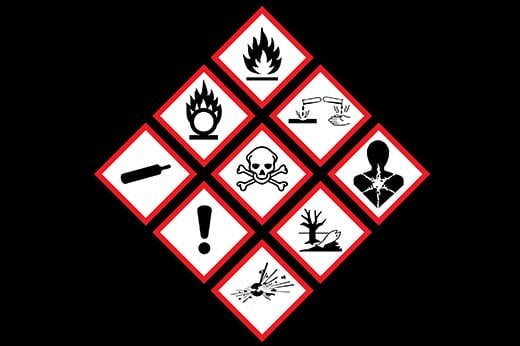An explanation
The principle that employers must control hazardous substances to protect their workforce from being harmed at work is one of the reasons organisations need gas detectors. In the UK what is expected of an employer is defined in a law called the COSHH regulations, the control of substances hazardous to health. COSHH is the law that requires employers to control substances that are hazardous to health. It states that an employer can prevent or reduce workers exposure to hazardous substances by:
Finding out what the health hazards are:
In the case of gases this will be looking at all the business activities and deciding what gases could be present, either directly produced by the activity or simply there by virtue of the environment. For example a brewery will produce carbon dioxide as a part of the brewing process, however, someone cleaning a sewer may come across hydrogen sulphide as it can be produced by the materials in the sewer. The cleaning work does not produce it.
Deciding how to prevent harm to health by carrying out a risk assessment and planning for emergencies:
This includes deciding how likely a gas is to be present, and how much danger it actually poses to the people working there. The risk assessment is an important process and should be documented. There should also be a plan for what to do in an emergency, including evacuation and medical first aid support.
Providing control measures to reduce harm to health:
This includes where possible removing the hazard, maybe using ventilation or changing the process, but if it is not possible to remove the hazard then providing warning equipment such as gas detectors and protective equipment like compressed air escape sets and self contained breathing apparatus.
Providing information, instruction and training for employees and others and making sure the instructions are followed and the equipment used:
This includes training to understand the hazards being faced by the employee, and training in how to react in an emergency. Training in how to use the equipment provided and when to use it. It is also required that the equipment be maintained ready for use, including correct and up to date calibration and bump testing for gas detectors.
Many businesses use or produce gases. These could cause harm to employees, contractors and other people. The Health and Safety Executive in the UK document the levels of various materials and what they consider to be safe workplace exposure levels (WEL’s) in a support document called EH40;2005 (https://www.hse.gov.uk/pubns/books/eh40.htm). This was recently updated in January 2020 to include new guidelines for various materials. The WEL’s for different gases will vary slightly from country to country as national or regional (European) standards apply, the principle however is exactly the same. These state the exposure levels which are considered safe for 15 minutes (short term exposure limit, STEL) and 8 hours (long term exposure limit, LTEL). Typically these levels are used as first and second stage alarm points on portable gas detectors.
Devices such as the MGT, SGT and SGT P come with alarm points set to common “standard” levels, which are in line with documents such as EH40. They can however be configured to other levels using the IR link and the software.


